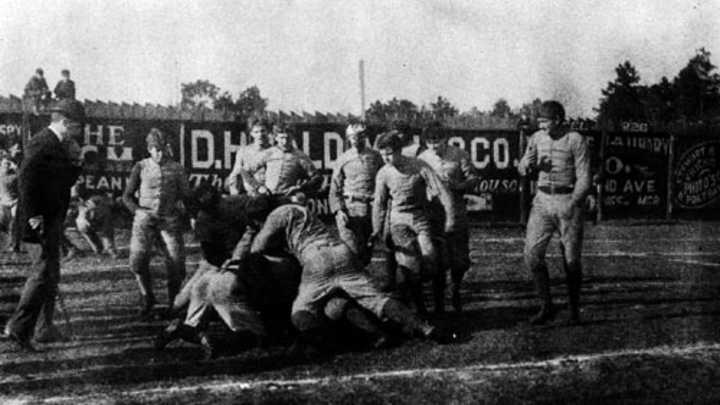Daily Dose of Crimson Tide: The First Game

In the beginning, there was football.
Ok, there wasn’t. But for such a rabid fan base, the question, “What came first, the school or the football team?” would cause some of the Crimson Tide faithful to pause.
Obviously, the answer is the University of Alabama, which existed for decades without football, with dedication ceremonies held in 1831 (well before the first college football game was played between Rutgers and Princeton in 1869).
At the time, the university consisted of seven buildings and 52 students.
It wasn’t until 1892, the year before the first two women enrolled (no cheerleader jokes, please), that football arrived on the Capstone. Student William G. Little had been introduced to the game as a high school student at Phillips Exeter Academy in New England, but the death of his brother brought him back to his home state of Alabama to help his family. Once enrolled, he collected a group of students to form a team that included a future Speaker of the U.S. House of Representatives, state governor, state senator, judge, doctor, and prominent businessmen and lawyers.
At the time, the game was actually a hybrid of soccer and rugby, and better resembled an organized riot compared to what football is today. Also, uniforms were basically a heavy sweater (which would have been nearly impossible to wear in the summer months due to the heat and humidity, and at minimum extremely uncomfortable), padded pants and no helmets.
Little was named the first team captain, and E.B. Beaumont coach. Because the sport was still virtually unknown in the South, opponents were scarce, but the Birmingham Athletic Club boasted a team made up of former college players from the Northeast.
However, because Alabama first wanted a trial run, or preseason if you will, it first scheduled a game against a collection of high school athletics from the Birmingham area. On Nov. 11, 1892, Alabama won its first game 56-0 against the self-proclaimed Birmingham High School team. It then lost the next day 5-4 to the Birmingham Athletic Club.
A local newspaper described the winning play, a drop-kick by J.P Ross, who had played rugby in Ireland, as: “Just as the Birmingham enthusiasts were beginning to despair of a victory, Ross made a clean kick of sixty-five yards which was the most brilliant feat ever witnessed in a match game. The crowd set up cheer after cheer and his admirers gathered him on their shoulders and paraded him around the grounds.”
A month later, much-improved Alabama, which unlike the much-burlier club team could practice daily, came back and won the rematch, 14-0. It was described as a “battle royal” and “Waterloo for Birmingham,” with Beaumont called “One of the best football coaches in America.”
Alabama played one final game that inaugural season, in February of that same school year, against state-rival Auburn. Even back then there were hints that Auburn was not just another opponent, and fans covered the Caldwell Hotel with red and white banners in support of Alabama.
It didn’t help. Auburn won at Lakeview Park in Birmingham, 32-22.
